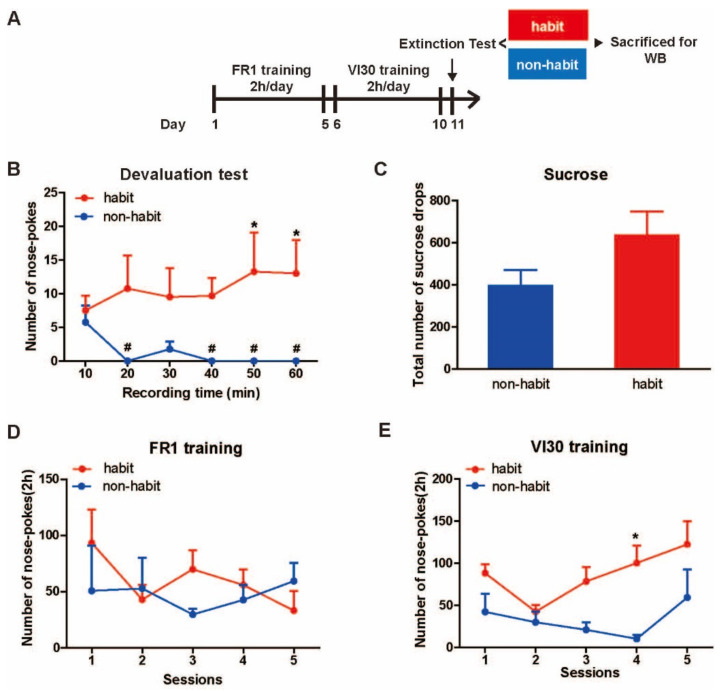Figure 4.
The establishment of habitual sucrose-seeking behavior in tree shrews. (A) The protocol for the training of sucrose habitual behavior. (B) In the devaluation test after VI training, the habit group exhibited no significant difference during the following five 10 min intervals compared with the first 10 min, while the non-habit group exhibited a decreased number of nose pokes in the periods of 10–20, 20–30, 30–40, 40–50, and 50–60 min compared with the period of 0–10 min. # p < 0.05 the number of valid nose pokes in the non-habit group compared with the number of valid nose pokes in the first 10 min; * p < 0.05,, the number of valid nose pokes in the non-habit group compared with the number of valid nose pokes in the habit group. (C) The received drops of sucrose was no different between the habit tree shrews and the non-habit tree shrews. (D) The number of valid nose pokes in the FR1 training was no different between the two groups. (E) The number of valid nose pokes in the VI training in the non-habit group was fewer than that in the habit group on the 1st, 3rd, and 4th sessions. * p < 0.05, habit vs. non-habit. The data were expressed as the means ± SEM and analyzed with a two-way ANOVA followed by the Bonferroni post hoc test or LSD post hoc test or the t-test, habit group n = 4, non-habit group n = 4.

